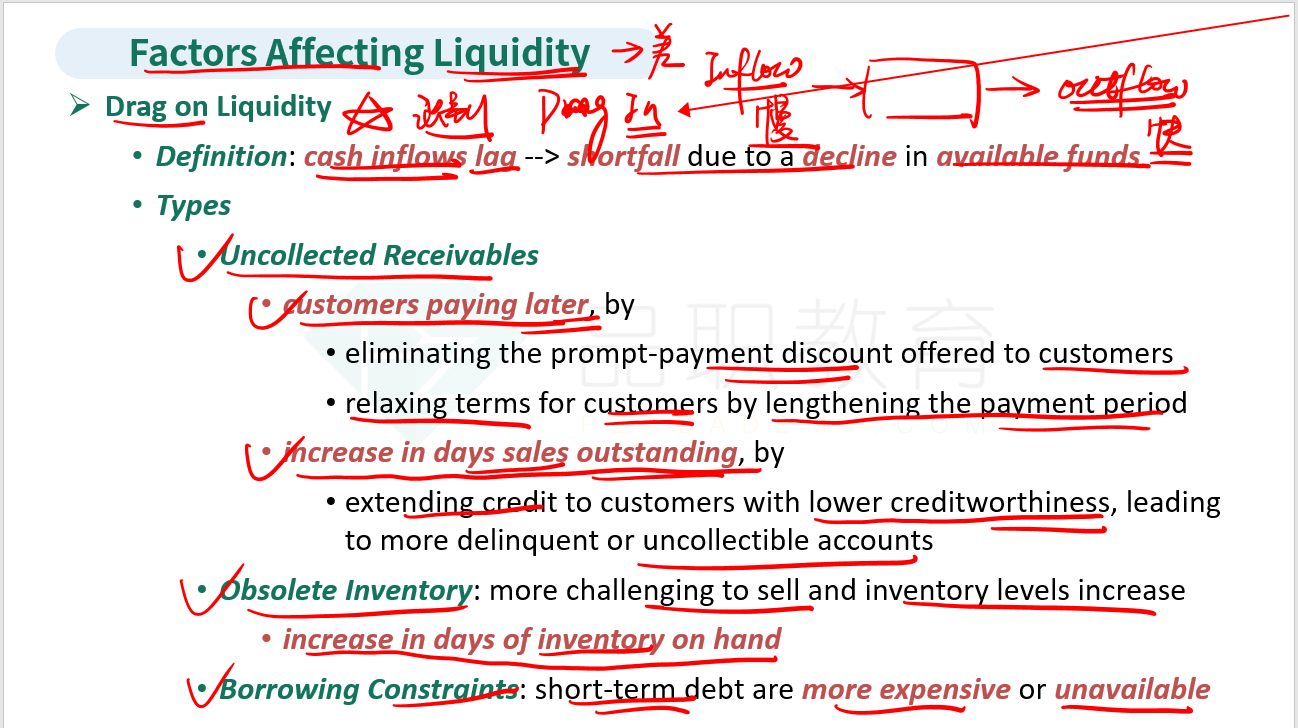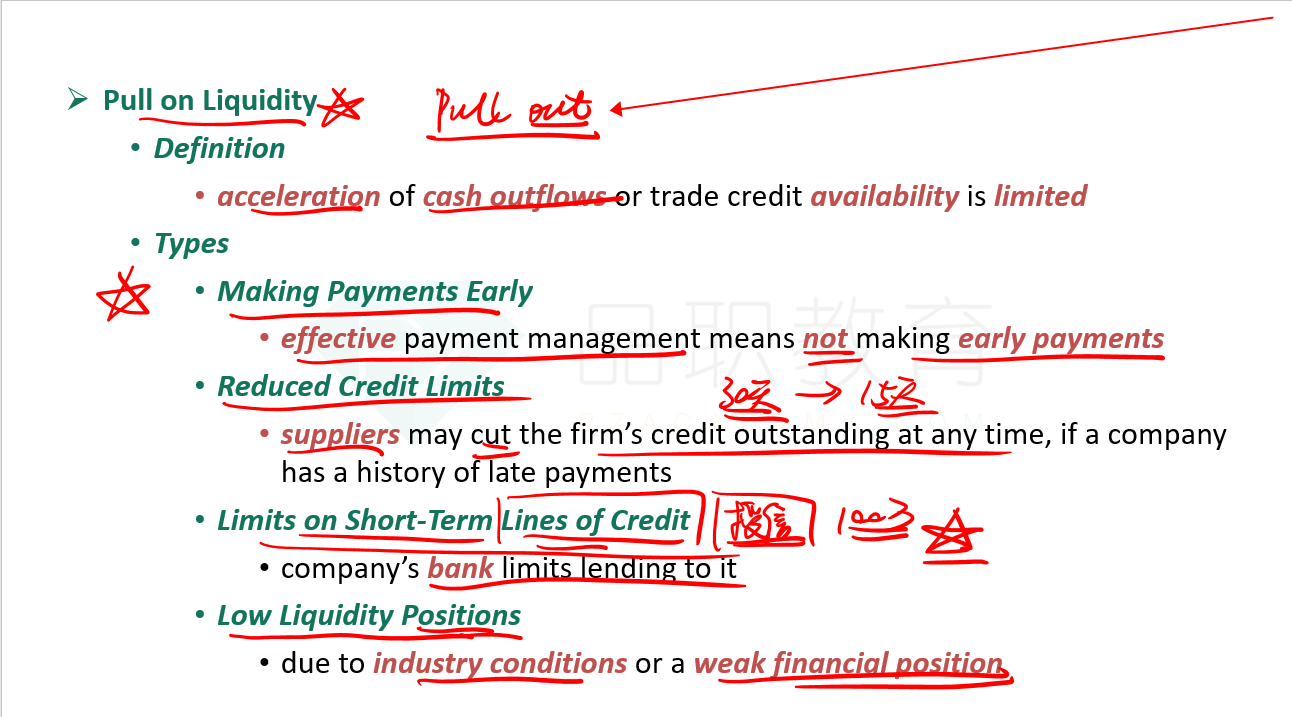NO.PZ2023090505000019
问题如下:
Changing its accounts receivable policy to extend credit to customers with lower creditworthiness will most likely result in:
选项:
A.a pull on liquidity.
a drag on liquidity.
no effect on liquidity.
解释:
B is correct. By extending credit to customers with lower creditworthiness, the company is likely to experience more delinquent or uncollectible accounts and an increase in days sales outstanding, resulting in a drag on liquidity.
A is incorrect, because a pull on liquidity would result from an acceleration of cash outflows. In this case, the change to the company’s credit policy has the effect of slowing cash inflows.
C is incorrect, because the change in the company’s accounts receivable policy would likely increase its working capital needs due to having higher accounts receivable.
能讲一下这两个流动性的区别吗





